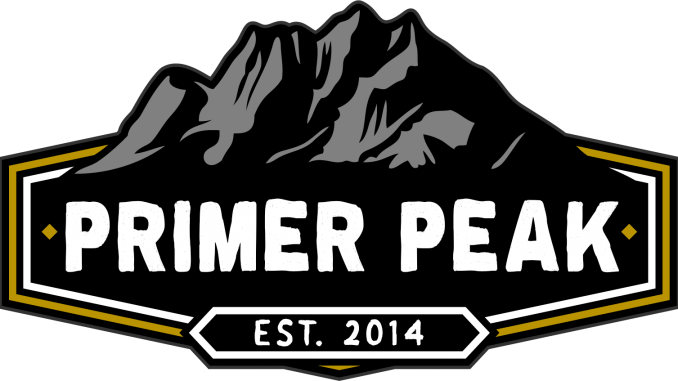
A few years ago, I spoke to emergency equipment to carry in your vehicle. The focus in that article was protection from a Midwestern Winter, with snow and ice being major concerns. Earlier this year, I moved my family further west, to the Mojave Wasteland for work. While temperatures still drop below freezing, winter storms are less of a concern, and Summers are not as mild as before. Getting stuck in the desert is a real concern here, with temperatures often nearing 120 degrees Fahrenheit. Whether adventuring, or commuting, getting stuck could turn deadly in short order.
This list isn’t all-encompassing. This isn’t designed to help you survive for days or weeks in the middle of nowhere. The focus here is keeping you alive for under 24 hours as you wait for help to arrive. That can be in the form of emergency services, a helpful passerby, or similar. Think along the lines of a day trip, or commute to work gone wrong. You’re near a road, potentially staying with your vehicle, or moving to shelter on foot. We are specifically NOT hiking through barren desert, like a downed pilot or lost adventurer. While there are cases of that, and resources to help them, that isn’t what most of us will face.
Before You Leave Home
Mitigating problems before they happen is better than solving problems that didn’t have to happen. Here are some tips to help you avoid a potential disaster before you even leave home.
Well Maintained Vehicle
Many potential emergencies can be avoided by simply ensuring that your vehicle is up to task. Preventative maintenance is something you should be doing regularly, from changing your oil, replacing broken headlights, and more. Even simply topping off your tank, or getting a full charge can make a massive difference. These tasks are especially important if you’re heading out into rougher or unknown terrain, or taking extended road trips. You don’t want to be caught away from home because you didn’t keep your car in working order. This is one of the best ways to avoid using your desert vehicle emergency kit.
Knowledge of Minor Repairs
If things do go wrong, either due to poor maintenance, or a freak accident, you will be your own first responder. Knowing how to make minor repairs could be the one thing that keeps you from becoming stranded in the desert. Can you change a tire without directions? What about adding coolant or oil to the engine if you develop a leak or simply start burning up what’s already in the car? On top of this, do you have the supplies on hand to perform these repairs?
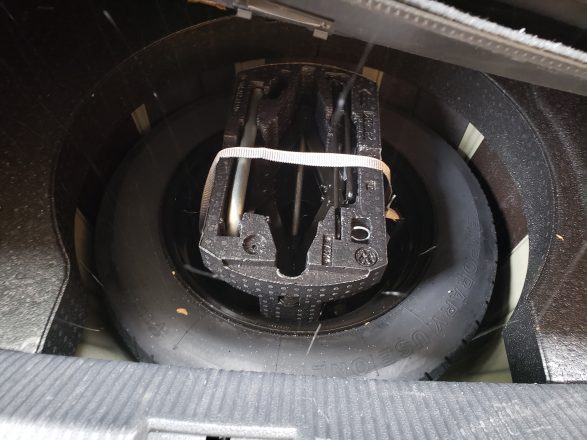
While a full size spare tire will be more useful, even a spare donut will get you further than a flat. Very few people I speak to have the knowledge, nor the equipment to make these simple fixes if the time comes. The most important thing in your desert emergency vehicle kit will be you.
Quality Sunglasses
One thing that I quickly noticed upon moving to the desert was that my cheapo gas station sunglasses weren’t cutting it. While they did provide some shade, the intensity of the light was still coming through. This would soon turn into eye fatigue and headaches, making my 40 minute commute uncomfortable at best. While shelling out for nicer glasses hurt me a bit, they’ve been a fantastic investment. I opted for a pair of Oakley Holbrook glasses for my day to day.
To save a little money, I ordered them online and chose in-store pickup to avoid the retail markup and online shipping fees. Since they’ll likely already be on your face, they’ll take up no room in your desert emergency vehicle kit. Pick up a pair of nicer sunglasses, your eyes will thank you.
Vehicle Recovery with Your Desert Vehicle Emergency Kit
Often times car trouble is related to something fairly minor that can be solved by a well equipped driver. There are a few things we can keep on hand that will enable you to return home with little, if any assistance from others.
Jumper Cables
At least once a week I see a car with a dead battery sitting in a parking lot with a distressed owner nearby. The desert heat saps the life out of batteries, and the one sitting in your vehicle is no different. Jumper cables are something drivers everywhere should keep handy, giving you a little boost until you can get your battery replaced.
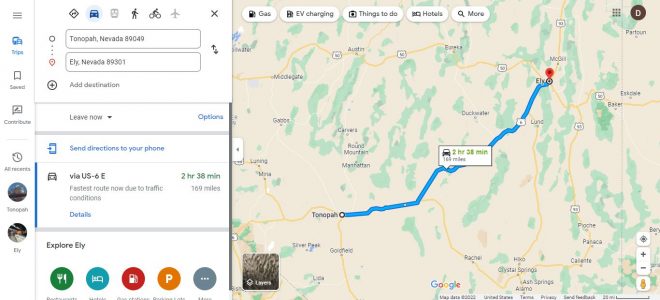
As an added benefit, you can also use yours to help someone in need. You might need the karma on your side for your next desert excursion. Even if you don’t plan on leaving the city, jumper cables could save you time and money.
Fire Extinguisher
Fires are more commonplace than people think. Nearly 1/7 of all fires are vehicle related, causing 300 deaths and 1,250 injuries annually in the United States (Source: 1, 2). In the past month alone I’ve found six different vehicle fires in my local area through a quick search of the news.
Keeping a functional fire extinguisher in your desert vehicle emergency kit could mean the difference between minor charring and a burned out wreck. You can pick yours up at the local hardware store, Wal-Mart, or even on Amazon.
Leaving the Vehicle with Your Desert Vehicle Emergency Kit
Circumstances may dictate you need to leave your vehicle. This could be due to fire, flash flood, or loss of air conditioning in the intense heat of the day. Whatever reason, it’s time to head out on foot. If this happens, you’ll want to be equipped to handle the harsh desert wasteland, both day and night.
Appropriate Footwear
Most people dress for the destination, not the trip. You don’t want to be caught walking long distances in flip-flops or ballet flats. Keep a pair of sneakers or broken-in hiking boots on hand in case you need to start hoofing it. A pair of quality socks stuffed inside the shoes will also be a good idea if you’re not the type to always wear those day to day. Your feet are more important than most people give them credit for; getting blisters, rolling ankles, and other injuries aren’t going to help your efforts.
Sunscreen
The sun in the desert is intense, and if you’re like me, you burn in no time at all. Sunburns will sap your energy, often causes illness in the short term, and can lead to certain cancers in the long term. Keeping a bottle of sunscreen in your desert vehicle emergency kit can help protect your exposed skin from the sun’s harmful rays in the event you have to leave the shade of your vehicle.
Don’t forget the backs of your hands, the front of your neck, or your legs if wearing shorts. As someone who has burned to the point of blistering, this is something you’ll appreciate, even if you don’t like the greasy feeling on your skin.
Mask
Masks remain a controversial piece of personal protective equipment (PPE). This time we’re not trying to hide our identity or protect from pathogens. Instead, we’re wanting to avoid inhaling dirt, sand, and dust. It gets windy in the desert, and it’s not uncommon to see dust devils and dust storms. That’s not something you want to breathe in.

Throw on a medical mask if the wind picks up to save your lungs and avoid chewing on grit for the next few days. Keeping a small pack in your desert emergency vehicle kit will ensure you have spares for any passengers as well.
Water
Staying hydrated could literally mean the difference between life and death. In the event you get your vehicle recovered and you have to drive yourself home, you’ll want to be in good enough shape to safely sit behind the wheel. The Mayo Clinic recommends men drink nearly four liters, and women nearly 3 liters of fluids daily, and that’s without the added rigors of being stranded in the desert.
Adding in some way of carrying spare water will be critical. This can be a rack of small bottles, a Camelbak, or something else. I always keep a 1.5L bottle with me when driving, but dedicated spare water is an important prep. Some people suggest a Lifestraw or other purification method, which can be valuable, but is outside the scope of this desert vehicle emergency kit.
Snacks
Whether it’s to help keep your energy up if you need to self-recover, or just a way to boost morale and pass the time, having something to snack on could come in handy. While not as critical as water, proper nutrition can make a big difference in your ability to help yourself. Find something non-perishable, that also won’t melt in the heat. This could be MRE components, some trail mix, cereal bars, and more. Throwing in some electrolyte packets to mix with your water will also help you improve hydration without taking up much space.
Cool Clothing
Since we spend the majority of our time in climate controlled environments, we’re often not dressed ideally for spending time outdoors. If you have to self recover on foot, or even hole up in a stuck vehicle, wearing more appropriate clothing for the weather could be a good idea. A quick change of clothes to something lighter weight in your desert emergency vehicle kit might be the lifesaver you need in a pinch.
I recommend keeping something like the Huk A1A fishing hoodie on hand. These are made from lightweight polyester, offering solid air circulation while also covering your arms, head, and neck. Well outside my typical fashion statement, they’ve been lifesavers in all-day competitions and classes, a massive improvement over my typical button ups and jeans.
Wide Brimmed Hat
If the fishing hoodie isn’t for you, then you’ll definitely want a wide brimmed hat. Think along the lines of surplus boonie hats; something that wraps all the way around the head with a wide brim. This will help protect both your face and your neck from intense sunlight as you make your trek to safety. I recommend cinching up the chin strap behind your head, as this helps keep the hat secure, but also won’t strangle you if it gets caught up on something.
Warm Clothing
While the desert gets unbearably hot during the day, temperatures drop sharply once the sun goes down. If you find yourself stranded after dark, you’ll want something warm to keep you from freezing while waiting for help. This is especially important if your car can no longer run the heater, or you have to move out on foot.
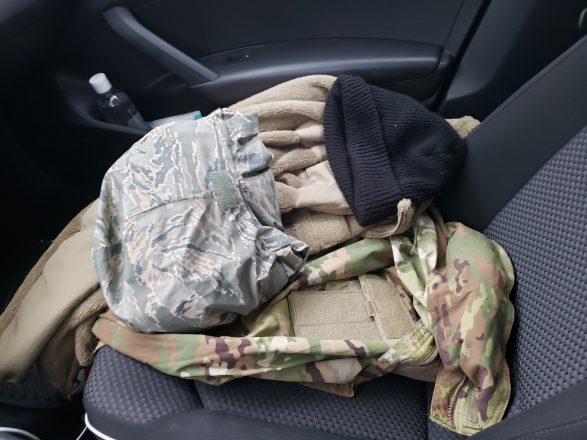
Long pants, a hoodie or jacket, and some sort of hat are easy to store and could make a massive difference in your comfort for the minutes or hours you find yourself in the cold cold night.
Escape Tools
To this point we’ve assumed that your emergency has started due to something simple like a dead battery, flat tire, or similar non-catastrophe. Unfortunately, things may not be so benign for you. Sharp turns, wildlife, and damaged roads could turn your relaxing drive into a dangerous wreck. It’s not unheard of to be stuck in your vehicle after a crash, either due to jammed seatbelts, broken door locks, or more. Having some sort of emergency escape tool easily accessible could mean the difference between escaping your vehicle or being trapped inside.
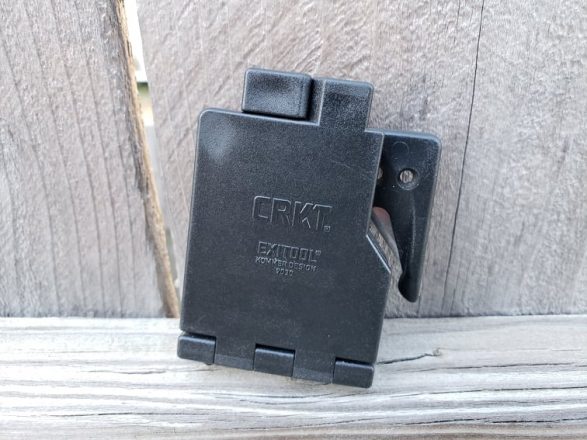
I reached out to a few friends in law enforcement, fire, and EMS for their suggestions on escape tools. While I don’t have any professional experience here, they recommend the Resqme Car Escape Tool, and the Leatherman Raptor Rescue Shears. Being fairly small, these are easy additions to your desert vehicle emergency kit.
Medical
From boo-boos to hemorrhages, in the event you find yourself in an accident, you will need to be your own first responder. Tourniquets such as the CAT, and hemostatic gauze will be invaluable to stop life threatening bleeding. A large triangular bandage can be used to help stop bleeding, as an improvised sling, or a variety of other uses as needed. Taking a Stop the Bleed course will give you a solid foundation in the use of this life saving equipment.
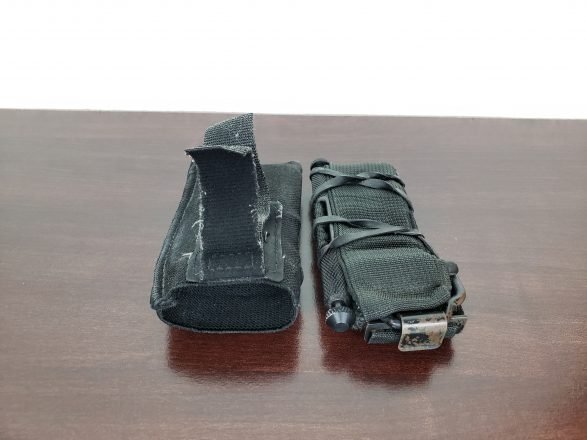
I also try to keep some over the counter medicines with me, such as ibuprofen, Imodium, and Pepto. These are worth their weight in gold when your head is pounding or your orifices are leaking.
Power Packs
We’re in an electronic world, from our phones, tablets, vapes, and more. Much like with our cars, our handheld electronics will have their batteries drained by the intense heat of the desert. You don’t want to be stuck without a way to communicate, navigate, or pass the time. Throw in a portable charger and some spare cables into your desert emergency vehicle kit to keep your toys powered up when you need them most. I’ve had great luck with the XYZ over the past several years. It will hold a charge over several months, and stores enough to power my phone roughly four times over.
Emergency Blanket
If you don’t keep warmer clothing on hand, you should at least grab an emergency blanket. These fold up incredibly small for easy storage, keep you warm, and can be used for signaling in a pinch thanks to their reflective surfaces.
Light/Signaling Tools
There’s a good chance you’ll be stuck in the hours of darkness, especially during the Winter months. While our phones all have flashlights, their output is anemic, and they quickly drain our primary method of communication. We want dedicated light sources, both handheld and hands-free. We’ve covered a variety of flashlights here, with some solid options including the Streamlight 1L-1AA, and the Surefire EDCL2-T. A good headlamp can also be valuable, keeping both hands available for other tasks. I recommend keeping some spare batteries on hand so you’re not left in the dark. Don’t forget to regularly swap batteries, as the heat will quickly drain them if you keep the lights in your car all day.
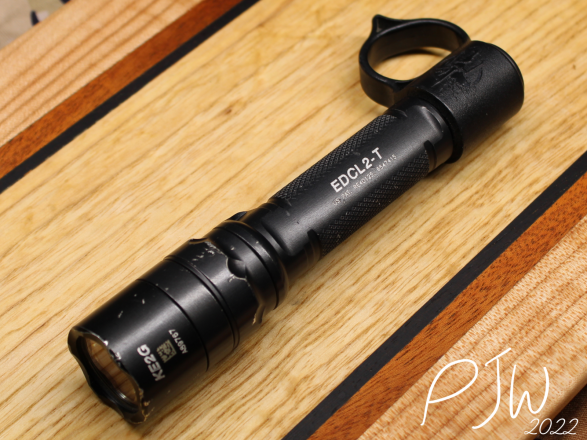
In addition to navigation, light can also be used for signaling for help. Glow sticks can be set out for low level useable light, along with marking your position. Road flares are an extremely effective method of letting people know where you are, as they burn bright and for a long time. Many auto parts stores sell reflective triangles that fold up compactly, and stand on their own to help alert passerby to your presence as well. If you plan on heading out on foot after dark, some sort of reflective vest or belt will help make you easier to find, both for your own safety and to improve recovery efforts. A little light can help with more mundane tasks as well, making them an easy addition to your desert vehicle emergency kit.
Wrapping Up Your Desert Vehicle Emergency Kit
Is this list all inclusive? Certainly not, there are plenty of additional pieces of equipment you may need to cover all possibilities. That being said, you also don’t necessarily need everything here all the time to save your bacon. Take your personal situation, skills, and space into account before chucking random gear into your vehicle. Weigh the risks versus rewards for everything, and maybe you’ll end up saving some money and stress. On top of this, ensure you know how all of your equipment functions, and keep it properly maintained. Even the most useful tools don’t mean much if they’ve wasted away, or you don’t know how it works.
Do you have your own desert vehicle emergency kit? Are there any additions you’ve made that we missed here? Let us know in the comments!
Support My Work
If you made it this far, thanks for reading! Writing isn’t my full-time profession, and nearly everything I do comes out of my own pocket. Between ammunition, tuition, range fees and more, expenses add up fast. If you like what I have to offer, consider making a donation to my Patreon.
Every bit helps bring more work like this to you, and contributes to shortened timelines or more in-depth work on my part. You’ll also have more direct access to me, offering suggestions for future projects, looking behind the scenes, and getting early access to some content. You can find my Patreon >>HERE<<


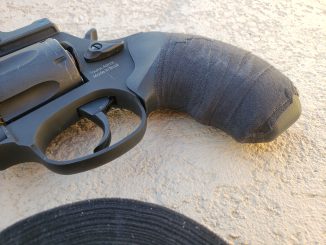
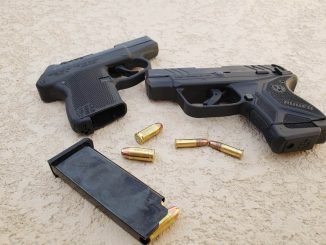

Be the first to comment